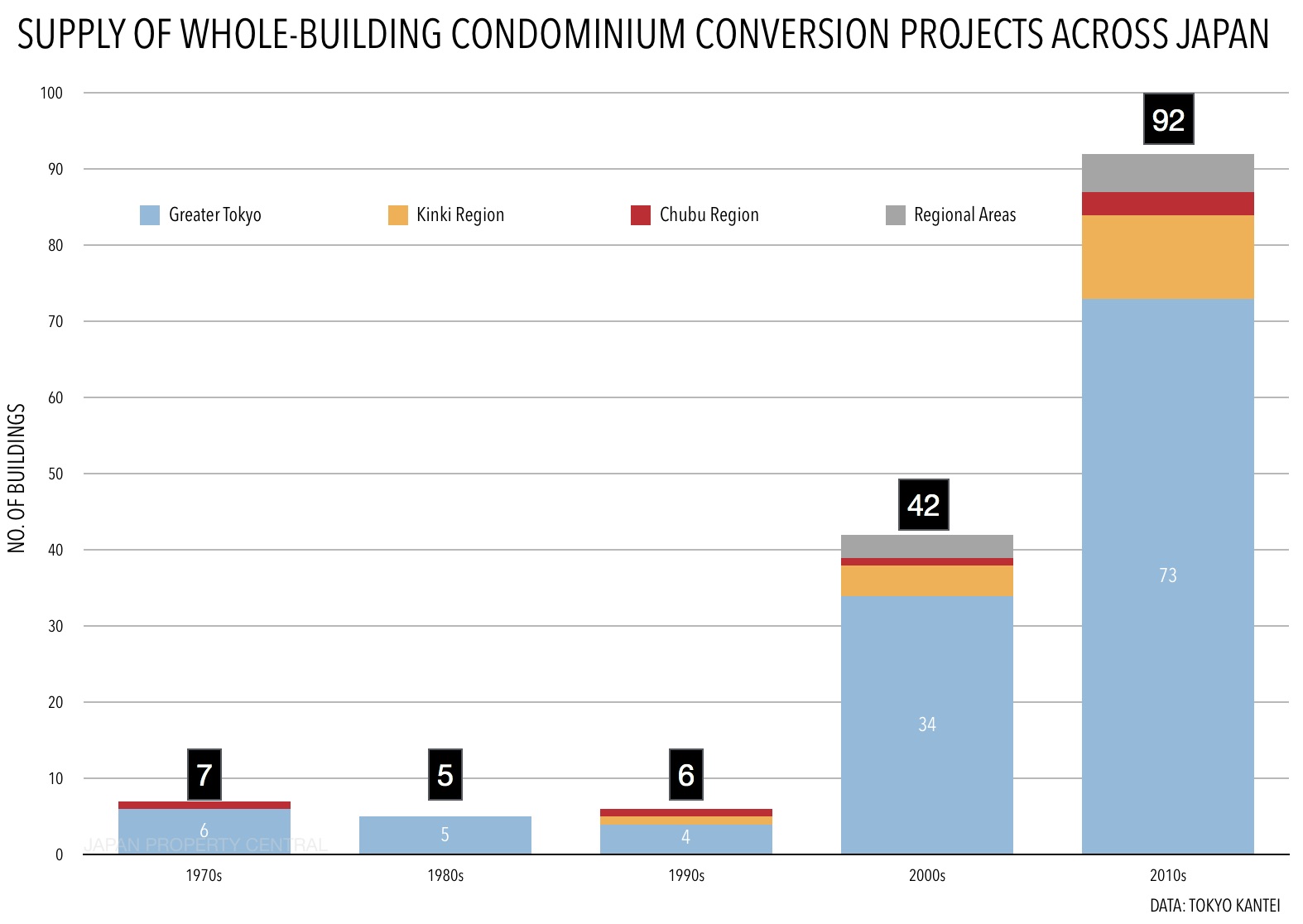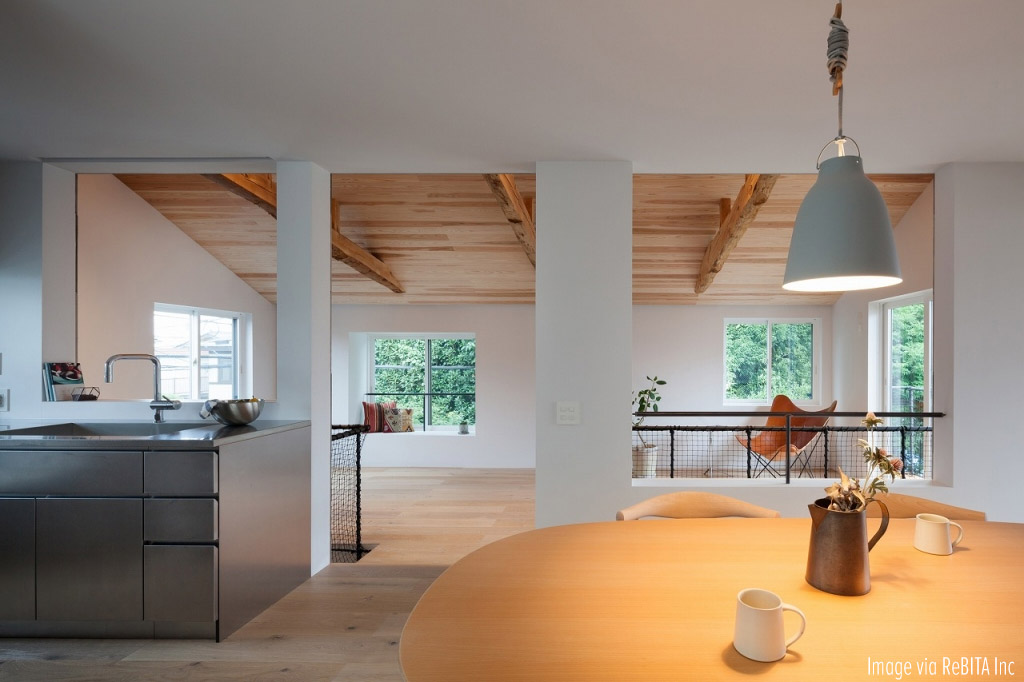Japan’s whole building renovation market doubles this decade

It has often been said that Japanese consumers prefer new construction over old. However, this way of thinking has started to change over the past few years with home buyers turning their attention to the existing home market. In 2016, sales of existing ‘second-hand’ apartments in greater Tokyo exceeded those of brand-new apartments for the first time ever. This has not gone unnoticed by Japan’s major real estate developers, who, once focusing solely on new construction, are now entering the growing renovation market. 15 of the top 20 developers are already active in this market.
60-yr old office building in Tokyo to be renovated rather than redeveloped

Although Tokyo’s Marunouchi and Otemachi business district has been seeing multiple skyscrapers go up in recent years, one vintage building from the 1950s has been faithfully protected by its owner.
The 9-storey Otemachi Building built by Mitsubishi Estate in 1958 celebrated its 60th birthday this April. It served as their headquarters until last year when they moved across the street to the recently completed 140 meter tall Otemachi Park Building.Read more
Renovating a 30-year old house into a zero-energy home

If you want a well-insulated house in Japan you usually need to build it yourself. If you are looking at an older house to buy or rent, insulation is usually lacking, unless the original owner decided to go the extra mile to create a home with insulation. For the majority of older homes, however, they tend to be built cheaply and can be cold in winter and hot in summer.
The construction and home building industry in Japan has come a long way in recent years with active efforts to create zero-energy homes. There are a lot of options now for double or triple-glazed glass windows, non-aluminum frames, insulation, and thermal breaks.
These insulation options are not just limited to new construction, it is possible to renovate an existing home to make it a zero-energy home.
One of these projects was recently completed in Daizawa near Shimo-kitazawa Station in Tokyo. The 2-story home was built in 1987. It has a concrete basement, while the above-ground structure is wood-frame. The house was fully renovated by Rebita and YKK AP, resulting in a contemporary home with numerous energy-efficient features, insulation, and earthquake-retrofitting.
Nara prison hotel to open in 2020

The 109-year old former Nara Juvenile Prison in Nara City will be converted into a hotel by 2020. On May 26, Japan’s Ministry of Justice announced that a group of 8 companies, led by Solare Hotels and Resorts, was the successful bidder for the project. A total of 3 groups submitted bids back in January.
The prison was built in 1908 and is the only surviving example of the Five Prisons of the Meiji era. The red brick prison was designed by architect Keijiro Yamashita. Yamashita worked for the Ministry of Justice from 1897 to 1930, and designed many prisons across the country.Read more
Homat Woodville converted to condominium

The former Homat Woodville apartment building, now called Woodville Azabu, in Nishiazabu has been converted into a condominium with apartments to be sold off individually as tenants move out.
Sales started in February 2017 with three apartments offered for sale. All three were immediately sold, including a 185 sqm (1,991 sq ft) apartment priced at 298,000,000 Yen (approx. 2.64 million USD). Additional apartments ranging from 141 sqm (268,000,000 Yen) to 178 sqm (328,000,000 Yen) were later offered for sale.Read more
Relocating a traditional Japanese house

Finding land with a traditional Japanese building for sale in the right location can be close to impossible regardless of budget. But, there are a number of these old traditional kominka available for purchase and removal across the country. If you find the right piece of land you may be able to relocate an old house of your choosing to the land.
These buildings can be bought for next-to-nothing. The real cost is in the actual relocation, although you may be surprised to find out that relocation costs may be similar to the cost of building a brand-new, average home.Read more
NTT flips condominium building in Azabujuban

NTT Urban Development and renovation company Rebita have converted a 27-year old former expat rental apartment building in Azabujuban into condominium units for individual sale.
The building, now called IKSIKS Azabujuban, is a 6-storey building completed in 1989. It was originally called Sun Palace Minamiazabu, and apartments were renting for around 3,300 ~ 3,500 Yen/sqm per month until recently. Several apartments are still occupied by tenants and won't be available until the tenants agree to move out.
NTT acquired the building in 2015. Renovations were completed at the end of last month, and three of the thirteen apartments in the building are already under contract.Read more
